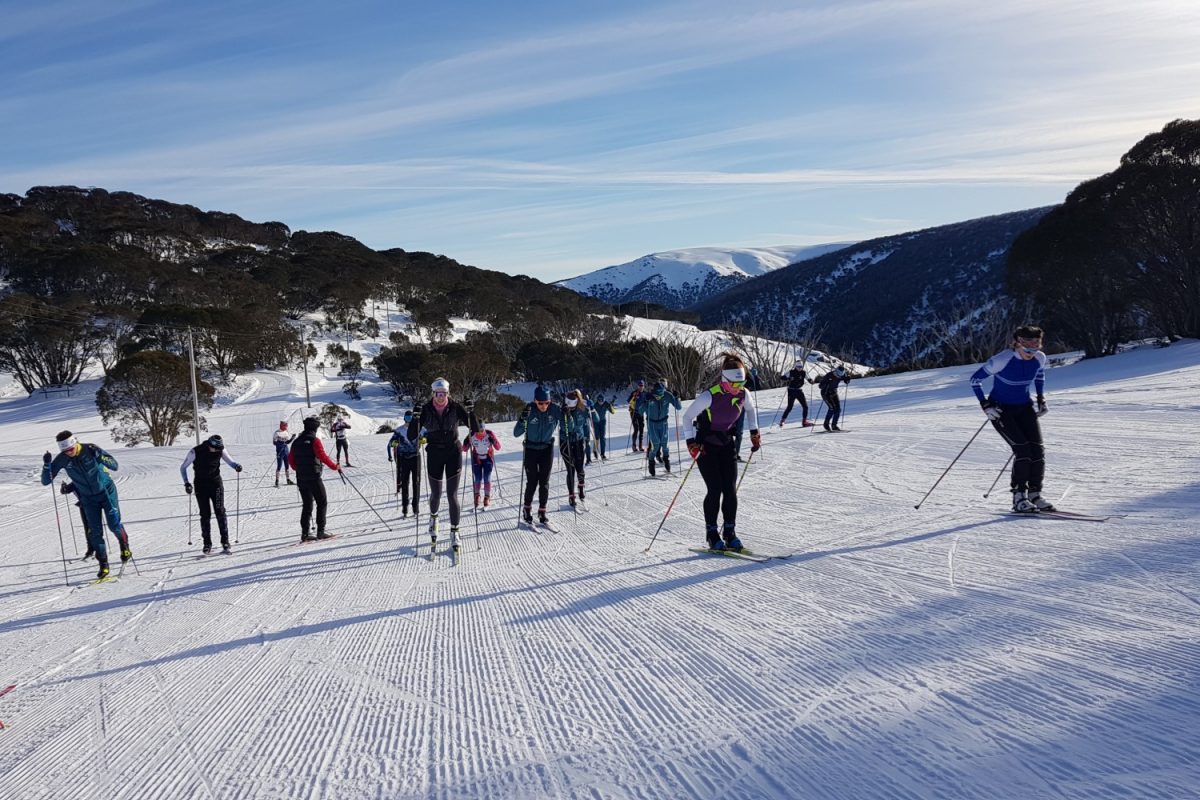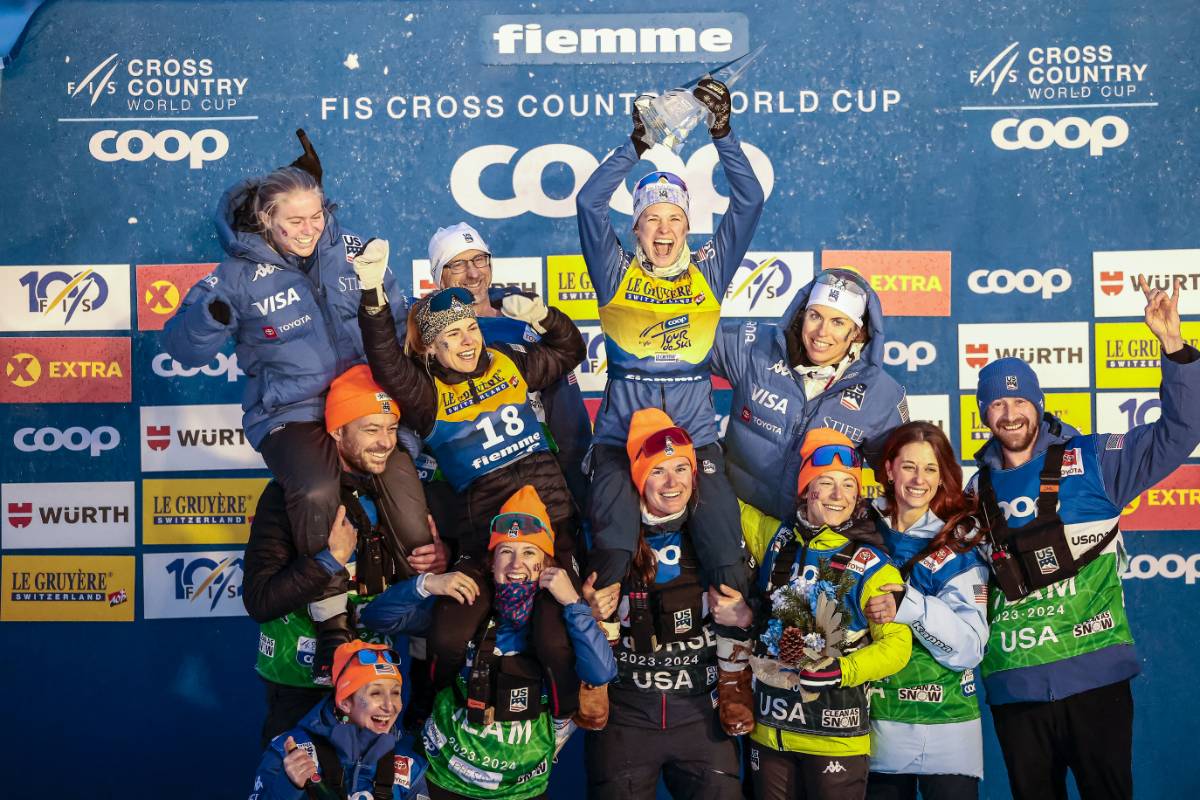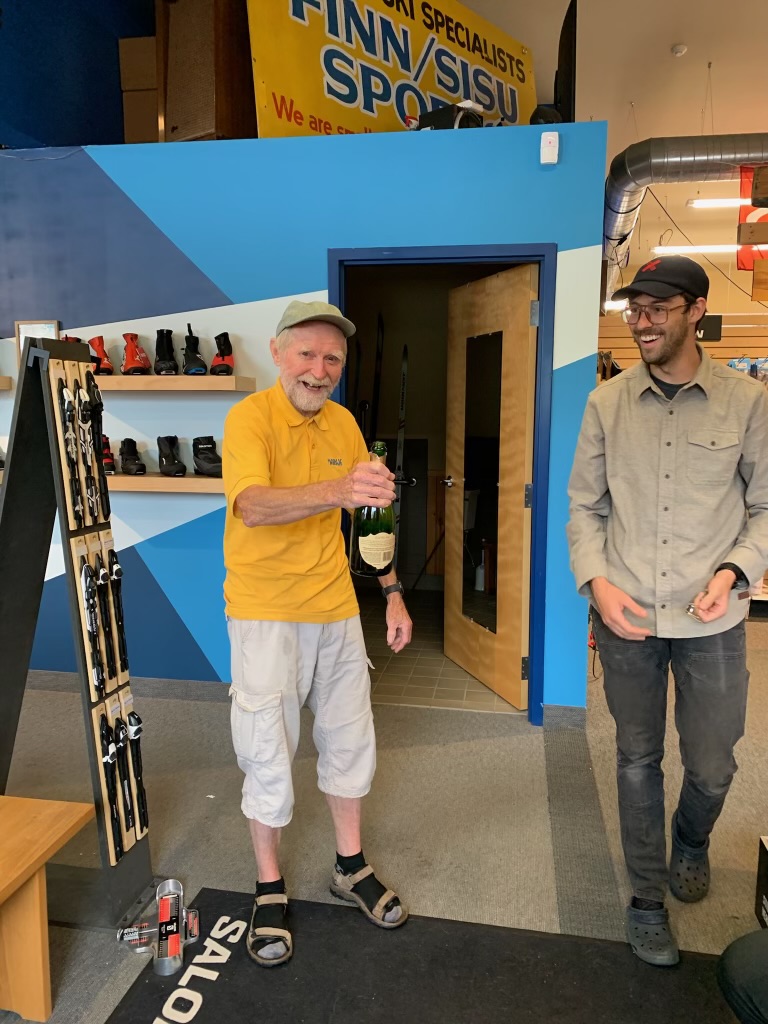
Like most Midwestern states, the majority of Minnesota is an unending grid of corn and soy fields. Land isn’t so much land as it is commodity. Inhabiting that landscape tends to be a constant reminder to think in terms of economy. Life, like farming, is a series of inputs and outputs, costs, and benefits. Unlike most Midwestern states, though, things get wilder the farther North you go in Minnesota. Lakes, lots of them, jut in on the back forty. The Earth is filled with ore. The pines displace the corn. The metaphysical effect is that impulses towards wildness and creativity get nourished, not dulled. Across six million people that produces a disproportionate number of that very American archetype: the original. A peculiar list of names. Bob Dylan, Terry Gilliam, Alan Page, Bud Grant, Herb Brooks, Paul Bunyan, Jim Klobuchar, Amy Klobuchar, Paul Wellstone, Paul Westerberg, Judy Garland, Jessie Diggins, and of course, Prince.
While Prince may be the only individual on the list who is known, universally, by a single name, Minnesota skiers add one more name: Ahvo. After 45 years, Ahvo Taipale is retiring from his role as the owner and operator of Finn Sisu Ski Shop. To most Midwestern skiers, he’s always just been there. But in his telling of the story, even he came in his own time.
“I first came to this country in 1968 to attend the University of Minnesota as an agriculture exchange student,” said Taipale when FasterSkier caught up to him this month. “I was doing what I always did as a farm boy in Finland: ski racing. I went up to the Duluth Loppet in I’d say 1973 or 1974, and I won the race. I was about to head out back to the Twin Cities when this group of people approached me, and one of them said, ‘you are Finnish, we are from Finland too.’ And they were, it was just that some of them were from the Two Harbors-Finland, Minnesota area, and I thought, well, I’ve accidentally found my way home.”
The past and future of skiing in Minnesota would merge at that moment. Ahvo would be the bridge between. He caught the tail-end of the Norse diaspora that originally brought cross-country skiing to Minnesota in the late nineteenth century, and then charted a unique future for the sport in America through his passion and savvy as a businessman.
“There were two parts that led to me starting a shop,” he said. “One was that I didn’t want to be traveling the world, I wanted to settle into a place. The second was that I was racing as much as I could in Minnesota, and through that, was starting to sell skis from Finland to others, because there was no shop that was selling high-quality racing skis in the United States.”
In 1978, Taipale imported a shop’s worth of racing equipment, and set himself up on University Ave. in the center of the Twin Cities. The shop’s name? Finn Sisu. “[Naming it] was easy,” said Taipale. “Everyone knew me as the Finn. And I was telling them all about Sisu, the untranslatable Finnish value of stoic determination and tenacity of purpose.”

The name would also cause Ahvo to foster cultural exchange between Finland and the United States, and lead to the other lasting part of his business life: the sauna. A few days after Finn Sisu opened its doors, a customer came in off the street and inquired about that other great Finnish export, the sauna. “They asked, ‘you’re a sauna business?’ and I thought about it for about three seconds and said, ‘Yes, of course!’” said Taipale, “Truth was, I had never built a sauna before.” His upbringing kicked in though, “When you are a farm kid and another way to do business walks right in the door, you figure it out.” Finn Sisu Ski Shop became Finn Sisu Ski and Sauna.
Over the subsequent forty years. Finn Sisu quickly became the go-to shop for high school teams and citizen racers alike in Minnesota. From the point of purchase at Finn Sisu, new ideas and new communities would start to take hold within Minnesota, and US, skiing. In turn, Ahvo would be there to support them. “I had a very simple policy that we would support any new club that came to me asking for some kind of support,” said Taipale. “If it was as simple as buying a spot on their t-shirt, we would do that. Oh boy, do I have a lot of t-shirts! As a businessman, I knew that was where my customers were coming from, and as a skier, I like more people to ski with.”
At the same time, Ahvo began to take an active part in developing the places that his customers were skiing, pushing the Twin Cities Metro Government to protect and expand its network of ski trails. “They initially came to me, because I guess I was easy to identify as someone who is passionate about skiing as a shop owner, but I really took to the dream of having the best trail system in the world here in Minneapolis,” said Taipale. “I could see that the Twin Cities were expanding. When I first got here, all the places we think of as ski areas now were relatively on the edge of the city—Battle Creek, Elm Creek, even Theodore Wirth Park—but that was quickly not going to be the case.”
From the 1980s on, he would lend his support to each new trail system proposal that came up. In the process, another dream of his started to formulate: “I wanted us to have the most snowmaking of any city in the world” said Taipale. As the Twin Cities grew, the ski facilities became world-class. Achieving all his goals as a promoter though, would turn out to span his entire career. “We got to a point where we had four snowmaking loops, which is what Oslo, Norway has. But we didn’t have one in St. Paul, in my neighborhood, until 2022 when Battle Creek opened. So now we have five, more than Oslo, and I skied 127 days last year, almost all, outside of the Birkie Trail and Korkki in Duluth, were at Battle Creek. That was thirty years’ worth of work, but well worth it.”
More trails were needed to accommodate more races, more clubs, and more skiers. In the late 1980s, Taipale started Vakava racing, which would go on to become the Twin Cities’ largest training group for a number of years and would expand Finn Sisu’s calendar to include wax clinics, ski clinics, and training opportunities with the scores of Minneapolis skiers that would go on to make pro clubs and the US Ski Team. For Ahvo, the business was always on his mind first and foremost in doing so, but he also admitted, that it was “Easy to get carried away with doing more, because why wouldn’t you? Skiing is fun to do, and skiers are good people too!”

Business grew. Wood skis gave way to fiberglass and carbon fiber. Three-pin bindings were replaced by the “new nordic norm” (NNN). Skate skis became the new game in town, then the only game in town, then split with their old-school “classic” counterparts. Ahvo always kept his eye out for the latest and greatest. As he built out training groups that looked to push skiing beyond its traditional wintertime season, Taipale began to import rollerskis, which were still in their early stages of development. “At the time, we were importing these rollerskis that had three wheels, which you don’t see anymore.” On a trip back to Finland though, he came across an engineer that had been tinkering around with rollerski design. “He really focused on making more durable wheels that could support heavier skier and make it actually feel like skiing, and what he came up with was a two-wheel design with a fiberglass shaft, and they looked almost like what you would think of as a skate rollerski today.” They were also, said Ahvo, “very bright, neon yellow.” The engineer had just started a company, Marwe. Taipale was giddy to bring them back to the United States, but there was one problem. “He already had a marketing firm that had drawn up a plan to import them to the United States.” Taipale though, knew the customers that those numbers represented, and knew that the marketing firm hadn’t counted for enough. “Their initial order was something like 30, and I simply said, ‘I will order ten times that right now and be back for another order in a week.’ And I did.” Finn Sisu would outfit the US Ski Team with Marwe skis for years and continues to sell them today.
By the mid-2000’s, the Twin Cities ski community was exponentially bigger than it had been in the 1970’s. New shops with a racing focus had started to pop up, with Taipale welcoming and supporting them, “competition helps everyone, and even today, the community is underserved.” Finn Sisu was growing likewise. Some of Ahvo’s original customers were bringing in their sons, daughters, grandsons, and granddaughters. Employees who had started working with Taipale as part-time high school workers were now full-time specialists in nordic skiing, and had been at the shop for decades. Finn Sisu needed a new, bigger, home. In 2009, the familiar awning outside their University Ave. location moved north to the Lauderdale neighborhood of St. Paul, and into their present location off Larpenteur Ave.
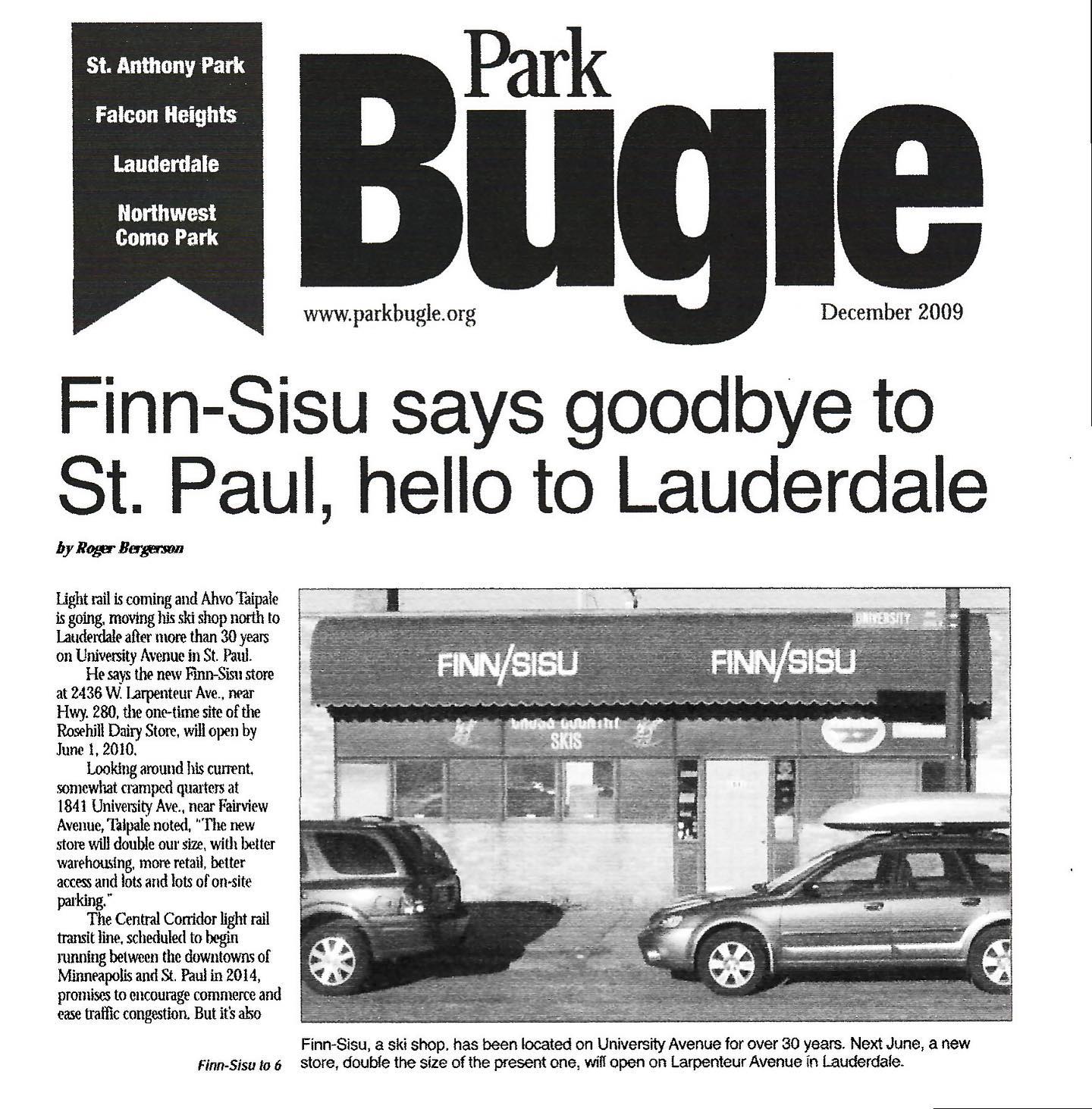
There was new space, new products, and a new feel at the new Finn Sisu location, but at its beating heart was the same warm presence of Taipale, now an elder statesman in the US ski community he had steadily kept on track, literally, for three decades. He had furrowed in and formed a community that now distinctly bore a semblance to his principles of hard-work, passion, and yes, sisu. For many skiers, trips to Finn Sisu were as much about the feeling that the experience as they were about the skis you left with. For some, it was a late summer trip to the nearby Como Park zoo before it closed on Labor Day weekend, a sure sign of winter to come. Opening the door with the familiar white beard holding forth with characteristic expression about where the sport of skiing, and skiing technology, and skiers, were going. When FasterSkier recounted a personal memory of a piece of wisdom from Ahvo, “cyclists and runners you can make into skate skiers quick, but learning to stride takes time,” he simply responded, “that is very true.” The skis you picked up always came with a story, even if they were brand new, because Ahvo couldn’t help it. And if there wasn’t a good fit, then you would get trademark honesty and generosity: “You might need to look elsewhere,” he’d say. “And have a great season!”
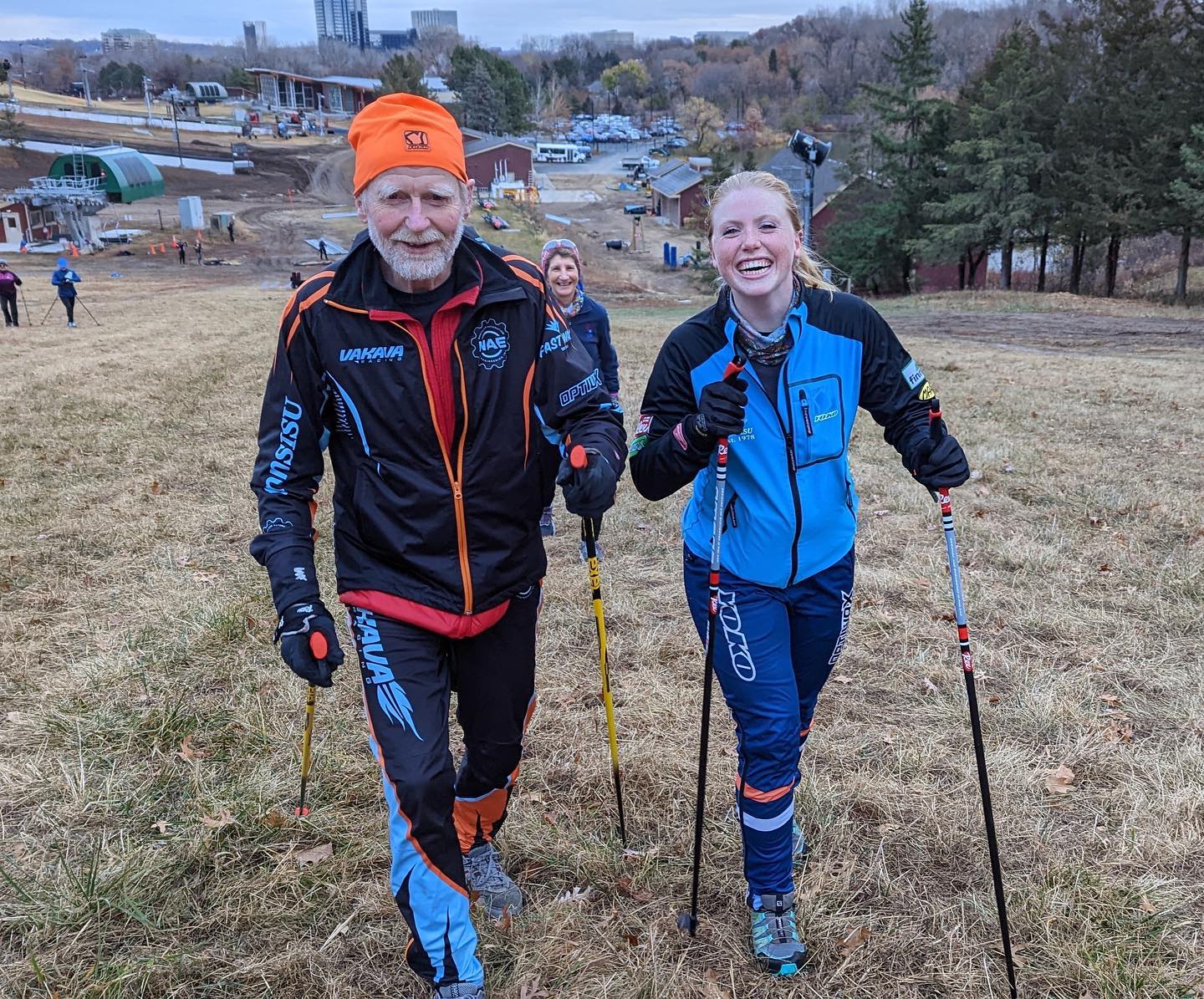
Approaching the age of 80, Taipale had begun to start to look at retirement. Pretty early in the process though, a set of principles that had guided him in business for fifty years became the clear priority in moving on from it. “I always have said to myself that I am very lucky to have been very successful in business,” he said. “Money couldn’t be the priority; the customer had to be.” Towards that, Taipale made the decision to sell to those that came from the community that encompassed Finn Sisu, to his employees. “I wanted there to be continuity,” he said. “Our customers who have come to Finn Sisu for fifty years can walk in, and it’s still Finn Sisu.”
After a few years of putting different coalitions and proposals together, the right deal came along. Novak, Rhode, and Weium would buy the shop from Taipale. Last month, they took Finn Sisu over as the owners and operators, and Ahvo Taipale took on his first new job title in 45 years: retired.
“To do something for 45 years is a long time,” he said. “All you can hope for is to be steady, and that is what I am most proud about. [Over that time,] I can only remember three bad days. Three days over nearly half-a-century, I will take that. I feel really lucky to have known the ski community and have them have known me. I couldn’t be a successful businessperson if it wasn’t in skiing.” He also acknowledges that along with that steadiness in business, comes a stubbornness in moving out of it: “I will still be around the shop. I will still be skiing over 100 days. I will probably do more, come to think of it.”
After a career spanning half a century, the continuity is there for Taipale. “I began skiing in Finland because it was the quickest way across the lake to get to school,” he remembered. “And here I am in the Twin Cities, where it’s still the quickest way across the lakes!” Through steady years skiing them, he took on the ingenuity and wildness those lakes fostered across the landscape of Minnesota, spread it to its people, and continues today, beloved by a land he came to as a stranger, and now calls home, the man simply known as Ahvo.
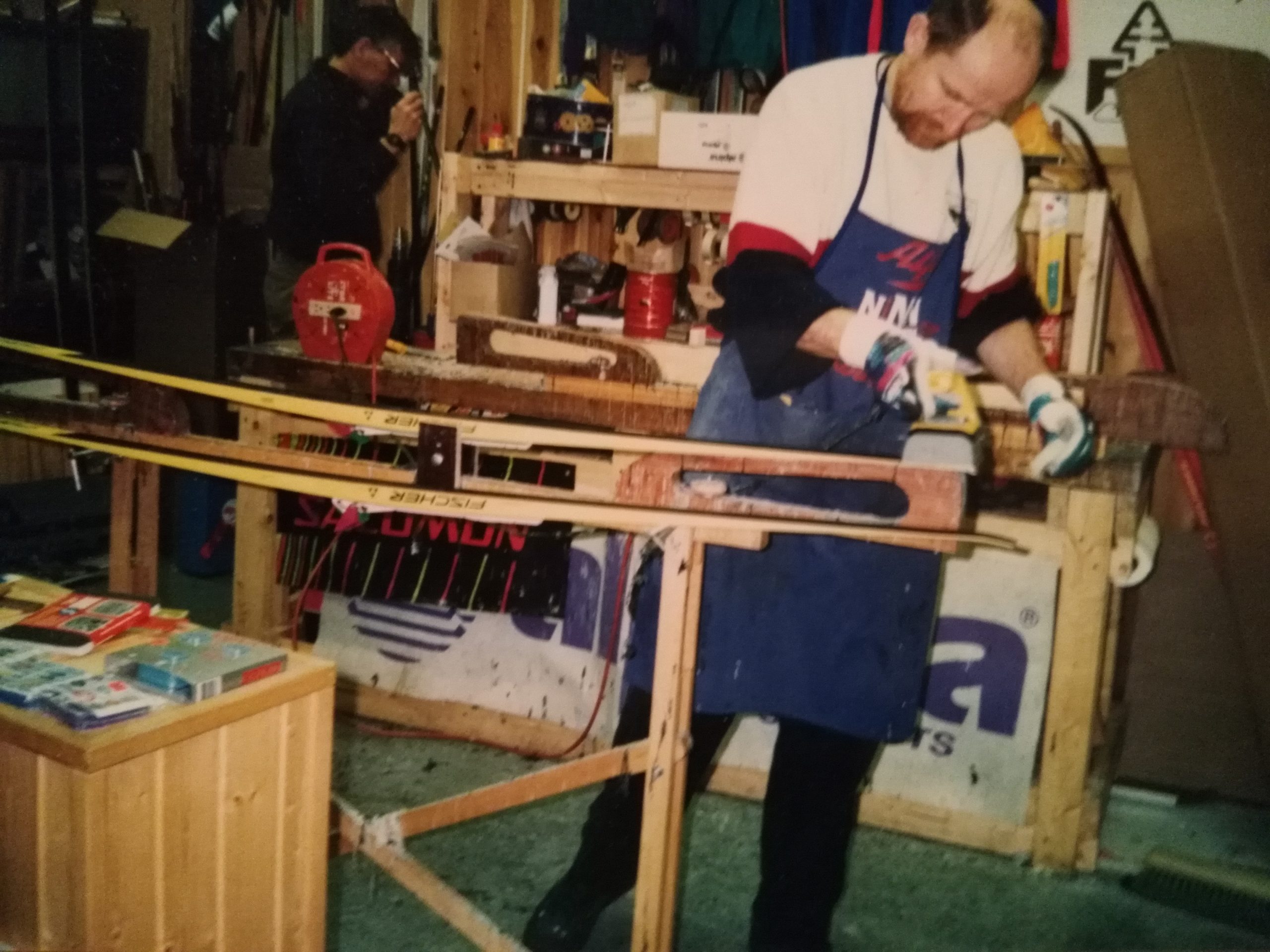
Ben Theyerl
Ben Theyerl was born into a family now three-generations into nordic ski racing in the US. He grew up skiing for Chippewa Valley Nordic in his native Eau Claire, Wisconsin, before spending four years racing for Colby College in Maine. He currently mixes writing and skiing while based out of Crested Butte, CO, where he coaches the best group of high schoolers one could hope to find.

